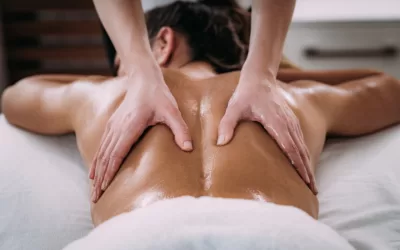Curious about the differences between Structural Integration and traditional TMJ treatments? Structural Integration, a bodywork technique aimed at improving posture and alleviating pain, offers a holistic approach to addressing TMJ issues. On the other hand, traditional TMJ treatments often focus on symptom management through methods like mouthguards or medications. Understanding these contrasting approaches can help you make informed decisions about your TMJ care. Dive into this guide to discover the key disparities between Structural Integration and conventional TMJ therapies, empowering you to choose the best option for your needs.
Overview of Traditional TMJ Treatments
Traditional TMJ treatments typically involve a combination of physical therapy, medications, and oral appliances. Physical therapy aims to strengthen jaw muscles and improve flexibility. Medications such as pain relievers and muscle relaxants are commonly prescribed to alleviate pain and inflammation. Oral appliances like splints or mouthguards help in realigning the jaw.
Physical Therapy:
- Helps strengthen jaw muscles
- Improves flexibility
Medications:
- Alleviate pain and inflammation
Oral Appliances:
- Aid in realigning the jaw
Potential Side Effects
While traditional TMJ treatments are effective for many, they may come with potential side effects. Medication can cause drowsiness, nausea, or even more severe reactions in some individuals. Physical therapy might lead to temporary soreness due to increased muscle usage.
Side Effects:
- Medication: drowsiness, nausea
- Physical therapy: temporary soreness
Effectiveness Comparison
The effectiveness of different traditional TMJ treatment options varies based on individual cases. While physical therapy is beneficial for muscle strengthening, it may not provide immediate relief for acute pain. Medications offer quick pain relief but do not address the root cause of TMJ disorders.
- Physical therapy: good for muscle strengthening
- Medications: quick pain relief
Introduction to Structural Integration Therapy
Structural Integration, a form of bodywork, focuses on realigning and balancing the body through manipulation of the connective tissues. The therapy aims to improve posture, alleviate pain, and enhance overall well-being.
Structural Integration believes that by manipulating the fascia, the connective tissue surrounding muscles and organs, they can restore balance and ease tension in the body. This approach differs from traditional treatments by addressing the body as a whole system rather than focusing solely on symptoms.
Structural Integration takes a holistic approach to healing, considering how posture, movement patterns, and emotions impact physical well-being. By working on alignment and balance, Rolfers aim to address not just physical discomfort but also underlying causes contributing to musculoskeletal issues.
Benefits:
-
- Improved posture
- Enhanced flexibility
- Reduced pain and tension
Drawbacks:
-
- Not covered by insurance
- May require multiple sessions for lasting results
To become a certified Rolfer, individuals undergo an intensive training program accredited by the Rolf Institute of Structural Integration. This program includes in-depth study of anatomy, physiology, and hands-on practice under experienced instructors.
Prospective Structural Integration must complete over 1,000 hours of training over several months before becoming certified practitioners. This rigorous process ensures that Rolfers are equipped with the necessary skills to effectively assess and treat clients using Structural Integration techniques.
How Structural Integration Releases Muscular Tension
Fascia, a connective tissue, plays a crucial role in maintaining muscle tension and flexibility. It surrounds muscles, bones, and organs, providing support and structure. When fascia becomes tight or restricted, it can lead to increased muscle tension and limited mobility.
Structural Integration focuses on manipulating the fascia to release tension in the body. By applying pressure and gentle manipulation techniques, Rolfers work to loosen tight fascia, allowing muscles to move more freely. This process helps improve overall muscle function and reduces stiffness.
During a Structural Integration session, practitioners use various techniques to release muscular tension. These may include deep tissue massage, stretching exercises, and movement education. By targeting specific areas of tension, Rolfers aim to restore balance and alignment in the body.
Myofascial release is a key technique used in Structural Integration to address muscular tension. This method involves applying sustained pressure to the myofascial connective tissue to eliminate restrictions and enhance mobility. Through myofascial release, Structural Integration can help alleviate chronic pain and improve posture.
Structural Integration not only releases muscular tension but also enhances overall mobility. By addressing imbalances in the body’s structure, Rolfers help clients move with greater ease and efficiency. Improved mobility can lead to reduced pain, increased range of motion, and better athletic performance.
Through a series of sessions, Structural Integration aims to reeducate the body’s movement patterns and promote better alignment. Clients often experience enhanced flexibility and coordination as a result of improved vagal tone, which influences relaxation responses in the body.
Pros of Structural Integration:
-
- Effective in releasing chronic muscular tension.
- Enhances overall mobility and flexibility.
Cons of Structural Integration:
-
- May cause temporary soreness after sessions.
- Requires multiple sessions for long-lasting results.
Structural Integration Benefits for TMJ Disorders
Structural Integration therapy offers significant pain relief for individuals suffering from TMJ disorders. By focusing on the alignment of the body’s fascia, Structural Integration can effectively address the root causes of jaw pain.
Structural Integration sessions involve deep tissue manipulation that targets specific areas of tension in the jaw and surrounding muscles. This targeted approach helps to release tightness and discomfort, leading to immediate pain reduction.
One of the key benefits of Structural Integration for TMJ disorders is the improvement in jaw function. Through a series of sessions, individuals experience enhanced mobility and flexibility in their jaw movements.
By addressing muscular imbalances and promoting proper alignment, Structural Integration helps to restore normal functioning of the jaw. This results in increased range of motion and reduced stiffness, allowing individuals to chew, speak, and yawn more comfortably.
Many individuals have shared their positive experiences with Structural Integration for TMJ disorders. One such success story involves Sarah, who had been struggling with chronic jaw pain for years.
After undergoing a series of Structural Integration sessions, Sarah noticed a significant reduction in her symptoms. She no longer experienced constant discomfort and was able to enjoy meals without fear of aggravating her condition.
Another individual, John, found relief from his TMJ symptoms through Structural Integration after trying various traditional treatments without success. The personalized approach of Structural Integration tailored to his specific needs made a remarkable difference in his quality of life.
Comparing Structural Integration and Traditional Treatments
Structural Integration focuses on manipulating soft tissues to correct alignment issues, while traditional treatments often rely on medications and surgeries.
Clinical studies have shown that Structural Integration can lead to improved outcomes for TMJ disorders over time compared to conventional methods.
Structural Integration therapy emphasizes individualized sessions tailored to each patient’s needs, promoting a more holistic approach than standard treatments.
In Structural Integration, practitioners use hands-on techniques to address underlying causes of TMJ problems, unlike the more generalized approaches in traditional treatments.
Traditional Treatments:
-
- Medications
- Surgeries
Structural Integration Therapy:
-
- Soft tissue manipulation
- Individualized sessions
Preparing for a Structural Integration Session
Prepare mentally for a Structural Integration session by setting aside time to relax before the appointment. Focus on your intention to improve body awareness and movement patterns.
Physically, ensure you are well-hydrated and avoid heavy meals right before the session. Loose, comfortable clothing allows easy access for the Rolfer to work on your whole body.
During a typical Structural Integration session, expect the Rolfer to assess your back, addressing imbalances in pliability and alignment. The session involves gentle manipulation to enhance structural integration.
Open communication with the Rolfer is crucial. Discuss any concerns or areas of discomfort beforehand. During the session, provide feedback on pressure levels and sensations experienced.
Expect some discomfort during deep tissue work, especially if there are areas of tightness or inflammation. However, the process aims to alleviate chronic joint issues and improve overall movement quality.
- Improved posture and flexibility.
- Reduction in chronic pain and tension.
- Enhanced sensory processing and body awareness.
Post-Structural Integration Care and Maintenance
After a Structural Integration session, hydration plays a crucial role in maintaining the body’s balance. Drinking plenty of water aids in flushing out toxins released during the therapy. It also helps in preventing dehydration, which can lead to muscle stiffness and soreness.
Engaging in gentle movement exercises post-Structural Integration can further enhance the benefits of the therapy. Activities like walking, stretching, or yoga help in integrating the structural changes achieved through Structural Integration. These movements promote flexibility, alignment, and overall well-being.
Scheduling follow-up sessions after the initial Structural Integration treatment is essential for maximizing its long-term effects. These sessions allow the Rolfer to assess any new developments or areas that may require additional attention. Consistent follow-up ensures that the body continues to progress towards optimal alignment and function.
Finding a Certified Rolfer
When seeking a certified Rolfer, start by verifying their credentials and experience. Look for practitioners who have completed the required training programs.
Ensure the Rolfer is certified by the Rolf Institute of Structural Integration or an equivalent reputable organization. This certification guarantees that the practitioner has undergone rigorous training in Structural Integration techniques.
To find a certified Rolfer in your area, visit the official website of the Rolf Institute. They have a searchable directory that allows you to locate practitioners based on location.
Another useful resource is the International Association of Structural Integrators (IASI) website. Here, you can find a list of certified Rolfers worldwide, making it easier to choose a practitioner near you.
Verifying the credentials of a Rolfer is crucial for ensuring a safe and effective session. A certified practitioner will have the necessary skills and knowledge to address your specific needs.
Conclusion
Now that you understand the differences between Structural Integration and traditional TMJ treatments, you can make an informed decision based on what aligns best with your needs. Structural Integration offers a holistic approach that focuses on releasing tension and realigning your body, potentially providing long-lasting relief for TMJ disorders.
To take the next step in your journey to alleviate TMJ discomfort, consider booking a session with a certified Rolfer. By experiencing firsthand the benefits of Structural Integration therapy, you may discover a new avenue for managing your TMJ symptoms effectively. Remember, your well-being is paramount, and exploring alternative treatments like Structural Integration could be the key to finding the relief you seek.
Transforming TMJ Disorder Management with Structural Integration: Achieve Jaw Harmony with MedicinEvolution’s Groundbreaking Approach!
Are you or someone you know struggling with the challenges of TMJ (temporomandibular joint) disorder, searching for relief from jaw pain, or aiming to enhance jaw function and alignment? MedicinEvolution is at the cutting edge of incorporating Structural Integration into TMJ disorder management and structural integration, offering individuals a pathway to optimal oral health and functional harmony. Through the powerful techniques of Structural Integration, MedicinEvolution directly targets the root causes of TMJ disorder, sparking a comprehensive healing journey. Say goodbye to the discomforts of TMJ disorder, including chronic jaw pain, difficulty chewing, and the uneven strain on your facial muscles—as MedicinEvolution tailors its approach to address your body’s unique needs, leading you towards significant relief and functional improvement. Their customized Structural Integration sessions are designed to navigate you through the limitations TMJ disorder imposes, unveiling your body’s full potential for movement and ease.
If TMJ disorder has been a source of constant pain, discomfort, or has restricted your jaw movement and overall quality of life, MedicinEvolution’s innovative method, blending Structural Integration with specialized techniques for TMJ care, is exactly what you’ve been looking for. Don’t let TMJ disorder dictate the boundaries of your oral well-being—take action and schedule your consultation with MedicinEvolution today! Embark on a healing journey with their Structural Integration-focused treatments and start progressing towards a more harmonious, pain-free, and functionally aligned jaw. Your body, now freed from the constraints of TMJ disorder, will embrace the remarkable transformation!





